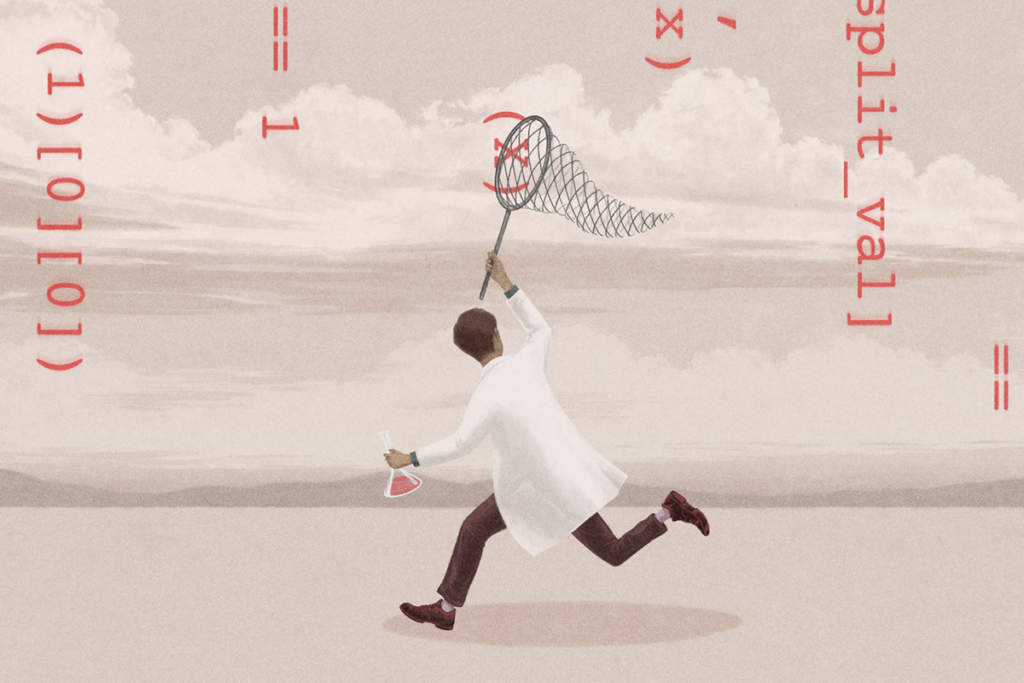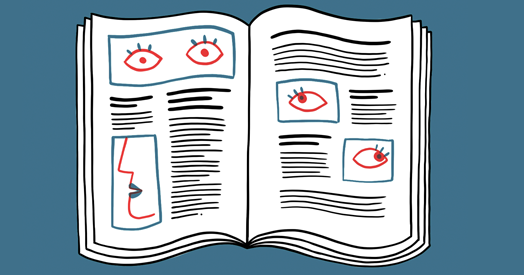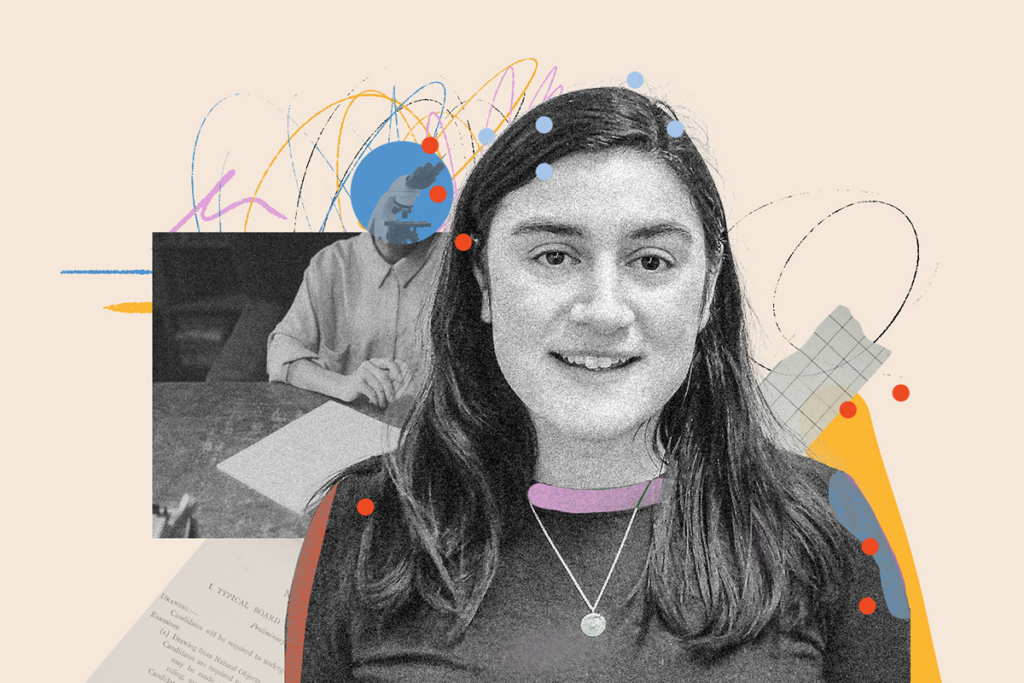SFN 2010
Recent articles
Movement study supports ‘extreme-male brain’ hypothesis
People with autism are slower than controls at interpreting emotions expressed by physical movement, researchers reported Wednesday at the Society for Neuroscience annual meeting in San Diego.

Movement study supports ‘extreme-male brain’ hypothesis
People with autism are slower than controls at interpreting emotions expressed by physical movement, researchers reported Wednesday at the Society for Neuroscience annual meeting in San Diego.
Modeling captures mouse habitat’s effect on neurons
Computerized three-dimensional modeling shows nerve cell abnormalities in the hippocampus of fragile X mice — and suggests the importance of raising experimental mice in more natural habitats, according to a poster presented Wednesday at the Society for Neuroscience annual meeting in San Diego.

Modeling captures mouse habitat’s effect on neurons
Computerized three-dimensional modeling shows nerve cell abnormalities in the hippocampus of fragile X mice — and suggests the importance of raising experimental mice in more natural habitats, according to a poster presented Wednesday at the Society for Neuroscience annual meeting in San Diego.
Antibiotic proves promising as fragile X treatment
Minocycline, an antibiotic approved to treat various infections including acne, can increase vocalizations and provide long-lasting improvements in anxiety in a fragile X mouse model, according to two posters presented at the Society for Neuroscience annual meeting in San Diego.

Antibiotic proves promising as fragile X treatment
Minocycline, an antibiotic approved to treat various infections including acne, can increase vocalizations and provide long-lasting improvements in anxiety in a fragile X mouse model, according to two posters presented at the Society for Neuroscience annual meeting in San Diego.
Video: Live from the brain, it’s neuron development
Brain cells communicate across complex junctions called synapses, filled with proteins working to bind neurons together. Kurt Haas of the University of British Columbia in Vancouver has developed a method to watch neuron development in the growing tadpole brain.

Video: Live from the brain, it’s neuron development
Brain cells communicate across complex junctions called synapses, filled with proteins working to bind neurons together. Kurt Haas of the University of British Columbia in Vancouver has developed a method to watch neuron development in the growing tadpole brain.
Mouse model hints at Alzheimer’s therapies for fragile X
Lowering the levels of proteins associated with Alzheimer’s disease can improve symptoms of fragile X syndrome in mice, according to a poster presented Wednesday at the Society for Neuroscience annual meeting in San Diego.

Mouse model hints at Alzheimer’s therapies for fragile X
Lowering the levels of proteins associated with Alzheimer’s disease can improve symptoms of fragile X syndrome in mice, according to a poster presented Wednesday at the Society for Neuroscience annual meeting in San Diego.
Congressman Kennedy calls for neuroscience ‘moonshot’
Sharing stories about his own family’s struggles with neurological disease, Patrick J. Kennedy, a Democratic Congressman, on Monday called for a focused national program to uncover the causes and treatments for brain disorders. The challenge today, he told SFARI, is to devote enough resources for research on disorders such as autism.

Congressman Kennedy calls for neuroscience ‘moonshot’
Sharing stories about his own family’s struggles with neurological disease, Patrick J. Kennedy, a Democratic Congressman, on Monday called for a focused national program to uncover the causes and treatments for brain disorders. The challenge today, he told SFARI, is to devote enough resources for research on disorders such as autism.
Video: Why make neurons from children with autism?
Ricardo Dolmetsch is making neurons from induced pluripotent stem cells derived from people with Timothy syndrome, a rare single-gene disorder that causes heart arrhythmias and autism. On Wednesday morning at the Society for Neuroscience annual meeting in San Diego, Dolmetsch talked to SFARI about how this approach could help autism research.

Video: Why make neurons from children with autism?
Ricardo Dolmetsch is making neurons from induced pluripotent stem cells derived from people with Timothy syndrome, a rare single-gene disorder that causes heart arrhythmias and autism. On Wednesday morning at the Society for Neuroscience annual meeting in San Diego, Dolmetsch talked to SFARI about how this approach could help autism research.
Potential biomarker found in urine of children with autism
Young children with autism have high urine levels of a compound that is likely to be a product of gut bacteria, according to a poster presented Tuesday at the Society for Neuroscience annual meeting in San Diego.

Potential biomarker found in urine of children with autism
Young children with autism have high urine levels of a compound that is likely to be a product of gut bacteria, according to a poster presented Tuesday at the Society for Neuroscience annual meeting in San Diego.
Immune protein alters development in young mice
Pregnant mice injected with the immune protein interleukin-6 give birth to pups that are less social than normal, an effect that results from the over-activation of two pathways critical in neurodevelopment, researchers reported Tuesday at the Society for Neuroscience annual meeting in San Diego.

Immune protein alters development in young mice
Pregnant mice injected with the immune protein interleukin-6 give birth to pups that are less social than normal, an effect that results from the over-activation of two pathways critical in neurodevelopment, researchers reported Tuesday at the Society for Neuroscience annual meeting in San Diego.
Video: Mining genes from whole genomes
Rapid advances in DNA sequencing technology are enabling researchers to comb quickly — and ever more cheaply — through whole genomes. At the Society for Neuroscience annual meeting in San Diego, Evan Eichler talked to SFARI about what the rapid accumulation of genetic sequence information means for autism research.

Video: Mining genes from whole genomes
Rapid advances in DNA sequencing technology are enabling researchers to comb quickly — and ever more cheaply — through whole genomes. At the Society for Neuroscience annual meeting in San Diego, Evan Eichler talked to SFARI about what the rapid accumulation of genetic sequence information means for autism research.
Explore more from The Transmitter
AI-assisted coding: 10 simple rules to maintain scientific rigor
These guidelines can help researchers ensure the integrity of their work while accelerating progress on important scientific questions.

AI-assisted coding: 10 simple rules to maintain scientific rigor
These guidelines can help researchers ensure the integrity of their work while accelerating progress on important scientific questions.
Glutamate receptors, mRNA transcripts and SYNGAP1; and more
Here is a roundup of autism-related news and research spotted around the web for the week of 15 December.

Glutamate receptors, mRNA transcripts and SYNGAP1; and more
Here is a roundup of autism-related news and research spotted around the web for the week of 15 December.
Frameshift: Shari Wiseman reflects on her pivot from science to publishing
As chief editor of Nature Neuroscience, Wiseman applies critical-thinking skills she learned in the lab to manage the journal’s day-to-day operations.

Frameshift: Shari Wiseman reflects on her pivot from science to publishing
As chief editor of Nature Neuroscience, Wiseman applies critical-thinking skills she learned in the lab to manage the journal’s day-to-day operations.